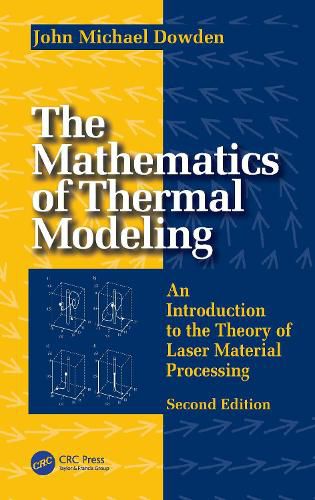Readings Newsletter
Become a Readings Member to make your shopping experience even easier.
Sign in or sign up for free!
You’re not far away from qualifying for FREE standard shipping within Australia
You’ve qualified for FREE standard shipping within Australia
The cart is loading…






The Mathematics of Thermal Modeling, Second Edition, provides an introduction to the basics of the mathematics and physics needed to understand and use the physical principles employed in constructing models of a number of aspects of thermal modeling in industrial processes, notably laser welding; most of the techniques are applicable to many other technological processes, however.
The book demonstrates how insight can be gained from mathematical enquiry at a simple level and helps workers understand the way in which more sophisticated models can be constructed. Some necessary but less familiar mathematical techniques are explained in greater detail than before and some discussion of wave-like features in welds is now included. An understanding will be gained of the importance of studying the interaction of multiple features.
The book is equally suitable for engineers and material scientists at the Master's or first-year PhD level at university, to similar students with a background in mathematics or physics who are new to laser or industrial technology, or for research workers coming to mathematical modeling of industrial thermal processes for the first time, whatever stage they have reached in their career development.
$9.00 standard shipping within Australia
FREE standard shipping within Australia for orders over $100.00
Express & International shipping calculated at checkout
The Mathematics of Thermal Modeling, Second Edition, provides an introduction to the basics of the mathematics and physics needed to understand and use the physical principles employed in constructing models of a number of aspects of thermal modeling in industrial processes, notably laser welding; most of the techniques are applicable to many other technological processes, however.
The book demonstrates how insight can be gained from mathematical enquiry at a simple level and helps workers understand the way in which more sophisticated models can be constructed. Some necessary but less familiar mathematical techniques are explained in greater detail than before and some discussion of wave-like features in welds is now included. An understanding will be gained of the importance of studying the interaction of multiple features.
The book is equally suitable for engineers and material scientists at the Master's or first-year PhD level at university, to similar students with a background in mathematics or physics who are new to laser or industrial technology, or for research workers coming to mathematical modeling of industrial thermal processes for the first time, whatever stage they have reached in their career development.